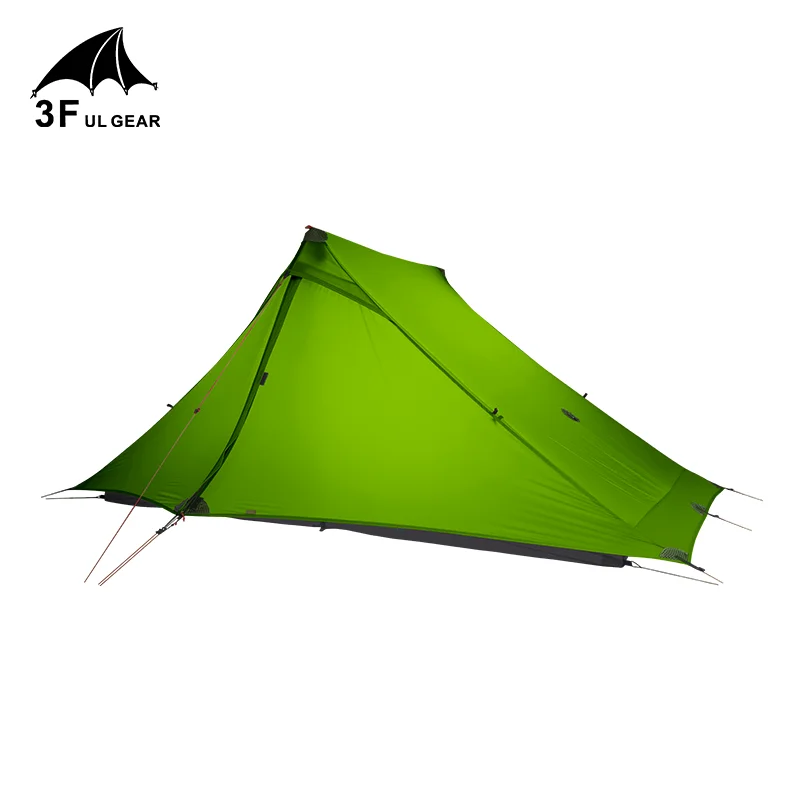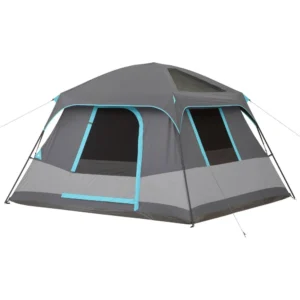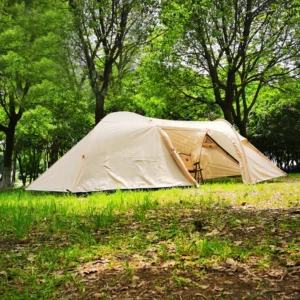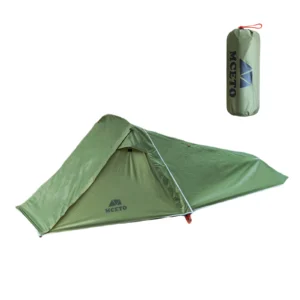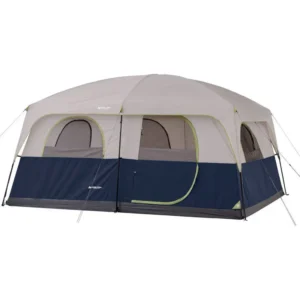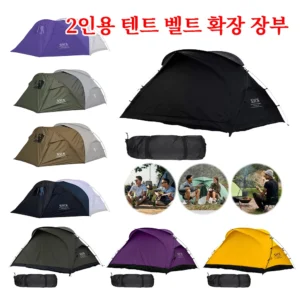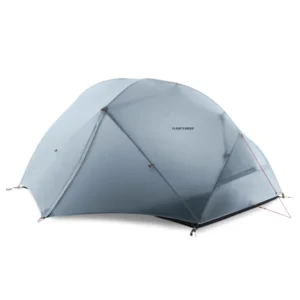Understanding Expanded Vestibules: The Game-Changer for Comfortable Camping
When it comes to tent features that truly transform the camping experience, expanded vestibules stand at the top of the list. But what exactly constitutes an “expanded vestibule”? Generally speaking, an expanded vestibule offers at least 6 square feet of protected space outside the main tent body, compared to standard vestibules that typically provide just 2-3 square feet. These enlarged areas feature extended rain protection, structural support, and are purposefully designed to enhance your outdoor living situation.
The difference between a standard tent and one with an expanded vestibule is comparable to the difference between a studio apartment and a home with a covered porch and mudroom. Fundamentally, what is tent vestibule design has evolved dramatically over recent years, with manufacturers increasing vestibule dimensions by an average of 40% in premium models.
Expanded vestibules transform camping comfort by creating functional transition zones between the outdoors and your sleeping quarters. They provide dedicated areas for gear storage, protect tent entrances from weather, and serve as multi-purpose spaces that extend your livable area without increasing the main tent’s footprint. Industry statistics show that vestibule space has now become one of the top five features campers consider when purchasing a new tent.
The benefits extend across various camping scenarios – from backpackers needing protected space to organize and store gear on rainy mornings, to family campers wanting a sheltered area for muddy boots and wet clothing. These advantages have led to remarkable innovations in ultimate guide tent vestibule storage solutions that we’ll explore in the following sections.
Essential Benefits of Expanded Vestibule Space: Why Size Matters
The addition of generous vestibule space transforms a basic shelter into a functional outdoor home. Here’s why enlarged vestibules make such a significant difference:
Ultimate Gear Storage: An expanded vestibule creates a protected environment where backpacks, boots, cooking equipment, and other bulky gear can remain accessible yet sheltered from the elements. A typical 8-square-foot vestibule can accommodate 2-3 full-sized backpacks (65L each), hiking boots, trekking poles, and even compact camp chairs without crowding. This keeps your primary sleeping area spacious and comfortable while ensuring essential equipment remains dry and readily available.
The Mudroom Advantage: Perhaps one of the most appreciated benefits is how expanded vestibules serve as transition zones that keep the main tent clean and dry. During rainy conditions, these areas allow you to remove wet or muddy clothing and footwear before entering the sleeping space. This “mudroom effect” significantly improves interior cleanliness and comfort, especially during extended camping trips when maintaining a clean living space becomes increasingly important.
Extended Living Space: Beyond simple storage, expanded vestibules create additional sheltered areas for various activities. Whether you’re preparing meals, organizing gear, or simply wanting a covered space to sit during light rain, these areas effectively increase your usable protected space by 30-50%. For multi-day campers, this extended living area becomes invaluable when weather conditions aren’t ideal.
Weather Protection Hub: An expanded vestibule provides crucial shelter from rain, wind, and intense sun without requiring retreat to sleeping areas. The guide to weather protection tent vestibule effectiveness shows how these spaces serve as buffer zones against harsh elements, allowing you to maintain outdoor connection even during challenging weather. This weather protection extends the functional hours of your campsite significantly.
Pet-Friendly Design: For campers traveling with dogs, expanded vestibules provide ideal protected sleeping spaces for furry companions. This arrangement keeps pets protected from weather while maintaining separation from sleeping areas—particularly valuable for dogs that may track in dirt or need their own space.
Enhanced Organization: Modern expanded vestibules incorporate sophisticated organization systems including gear lofts, utility loops, and pockets that keep equipment accessible and orderly. The definitive guide tent vestibule benefits highlights how these organizational features prevent the camping chaos that often plagues standard tents, where equipment becomes mixed with sleeping gear in confined spaces.
The value of these benefits increases proportionally with camping duration, group size, and environmental challenges. For weekend campers, expanded vestibules provide convenient extra space; for extended backcountry trips, they become essential components of comfortable, functional camp life.
Tunnel Tents: Vestibule Champions for Maximum Protected Space
Tunnel tents represent the gold standard when prioritizing vestibule space in your camping setup. These designs utilize a series of arched poles arranged in parallel to create a tunnel-like structure, with one end often dedicated to a significantly expanded vestibule area.
The design principles of tunnel tents naturally lend themselves to generous vestibules. Their elongated shape allows manufacturers to extend the rainfly beyond the sleeping area, creating covered spaces at one or both ends. The front vestibule in premium tunnel tents typically provides 8-12 square feet (0.74-1.11 square meters) of protected space—enough to store multiple backpacks and still leave room for cooking or gear organization.
Common configurations include:
– Single large vestibule at the front entrance (most common)
– Dual vestibules of unequal size (large front, smaller rear)
– Extended asymmetrical designs with side-entry vestibules
Pros:
– Unmatched vestibule-to-tent ratio (often 30-40% additional protected space)
– Excellent headroom at the entrance area
– Superior weather protection from driving rain
– Excellent space efficiency for the total footprint
Cons:
– Requires proper orientation to wind direction for stability
– More poles mean more weight in backpacking scenarios
– Larger packed size compared to dome designs
– Setup typically requires staking before pole assembly
Tunnel designs excel in conditions where maximum protected space is the priority, particularly for extended camping trips, base camping, and situations where gear management becomes crucial. Their efficient use of materials provides more protected square footage per ounce than nearly any other design, making them favorites among backpacking tent vestibule enthusiasts who don’t mind carrying slightly more weight for significantly increased living space.
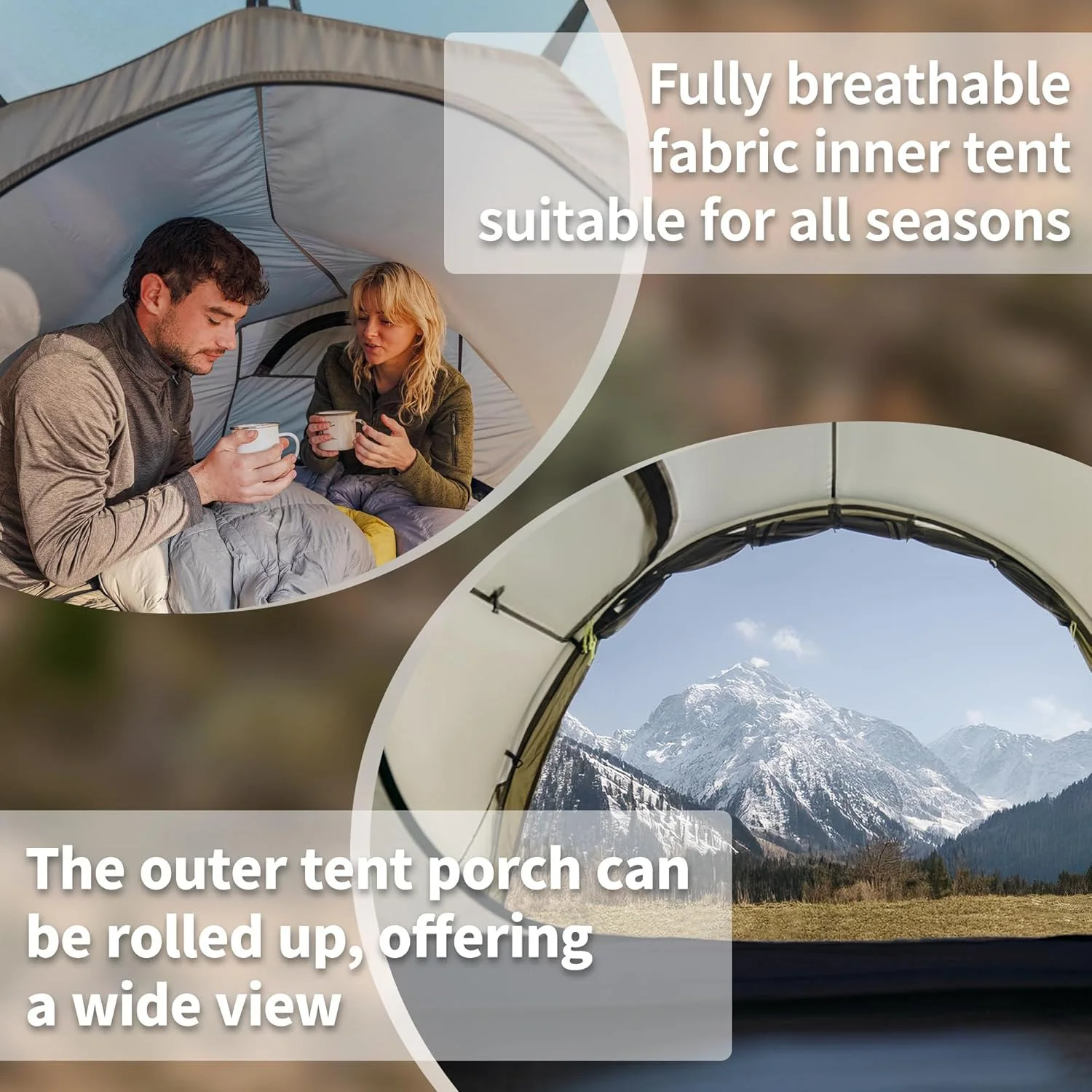
Large Dome Tents with Extended Vestibules: Balancing Stability and Space
Dome tents with extended vestibules offer an excellent compromise between the superior stability of geodesic designs and the functional benefits of expanded protected space. These tents typically feature the classic intersecting pole structure that creates the dome, with additional poles extending outward to support expanded vestibule areas.
The vestibule configurations in dome tents vary widely, but they commonly provide 5-9 square feet (0.46-0.84 square meters) of protected space. What makes dome designs particularly appealing is how the vestibule integrates with the tent’s inherent strength. The dome tent shapes stability comes from the crossed-pole structure, creating a framework that remains reliable in challenging weather conditions.
Pros:
– Superior stability in varied weather conditions, especially wind
– Freestanding design (main tent body) for easier setup
– Better interior height distribution throughout the sleeping area
– Vestibule often features better ventilation options
Cons:
– Slightly less vestibule space compared to tunnel designs of similar weight
– Vestibule typically requires staking even if main body is freestanding
– More complex geometry can create some awkward angles in the vestibule
– Premium materials required for larger spans add to cost
Dome tents with extended vestibules perform exceptionally well in situations requiring a balance between living space and stability. They’re particularly suited to areas with unpredictable weather or exposed campsites where wind protection becomes crucial. The camping tent vestibule options in dome designs often incorporate thoughtful features like multiple access points and superior ventilation systems that prevent condensation—a common issue in expanded protected spaces.
For campers who frequently encounter variable conditions or who camp in exposed areas like alpine zones or coastal regions, the dome design with extended vestibule represents the optimal blend of protected space and structural integrity.
Cabin-Style Tents: Vertical Walls Meet Generous Covered Entries
Cabin-style tents transform the camping experience with their house-like design featuring near-vertical walls and substantial height throughout the structure. When enhanced with expanded vestibules, these tents create the ultimate basecamp living arrangement for comfort-focused outdoor experiences.
The defining characteristic of cabin tent vestibules is their impressive volume. With typical dimensions ranging from 15-30 square feet (1.4-2.8 square meters), these entry areas often function more like covered porches than traditional vestibules. The vertical walls and substantial height (often 6+ feet) create usable space that feels genuinely room-like rather than simply a storage area.
Pros:
– Unmatched usable volume with standing height throughout
– Often includes features like built-in room dividers and multiple doors
– Superior organization options with wall pockets and hanging systems
– Many models incorporate screened “porch” areas with removable floors
Cons:
– Significantly heavier than other designs (typically 15+ pounds)
– Larger packed size makes them primarily suitable for car camping
– More susceptible to wind issues due to large flat surfaces
– Longer setup time with more poles and components
Cabin designs excel in family camping scenarios, extended basecamp situations, and any camping trip where comfort takes precedence over portability. The combination of interior living space and expanded vestibule creates a genuine outdoor home that enhances extended stays.
Many premium two room camping tent designs incorporate expanded vestibules as part of their multi-room configuration, creating distinct zones for sleeping, gear storage, and covered outdoor living. This separation of functions mirrors home design principles and significantly enhances comfort during longer camping trips.
Hub-Style and Modular Tents: Customizable Vestibule Solutions
Hub-style and modular tent systems represent the cutting edge of vestibule innovation, offering unprecedented flexibility in how protected space is configured. These designs utilize central hub connections where multiple poles intersect, creating stable frameworks that can support various attached components.
The core concept of modular tent structures two rooms extends naturally to vestibule design, allowing campers to add, remove, or reconfigure protected spaces based on specific needs. This adaptability proves invaluable for campers who face varying conditions or group sizes throughout their outdoor adventures.
Vestibule sizes in modular systems range dramatically from 8-40 square feet (0.74-3.7 square meters), depending on the components selected. Some systems allow connecting multiple tents via shared vestibule spaces, creating compound shelters for group camping.
Pros:
– Adaptable configurations for different trip requirements
– Ability to add vestibule space incrementally as needs change
– Option to share vestibule space between multiple shelters
– Often allows multiple configuration options with the same components
Cons:
– Connection points may present vulnerabilities to water entry
– More complex setup procedures with multiple components
– Higher initial investment for complete system components
– Typically heavier than single-unit designs with similar total space
The question of whether you can you add vestibule tent components to existing structures depends entirely on the system design. Purpose-built modular systems offer superior integration, while universal add-on vestibules provide more limited functionality but greater compatibility across different tent models.
These systems excel in situations requiring adaptability, such as guide operations, family camping with changing group compositions, or adventurers who camp across dramatically different environments and seasons. The ability to optimize protected space based on specific trip requirements represents a significant advantage for serious outdoor enthusiasts.
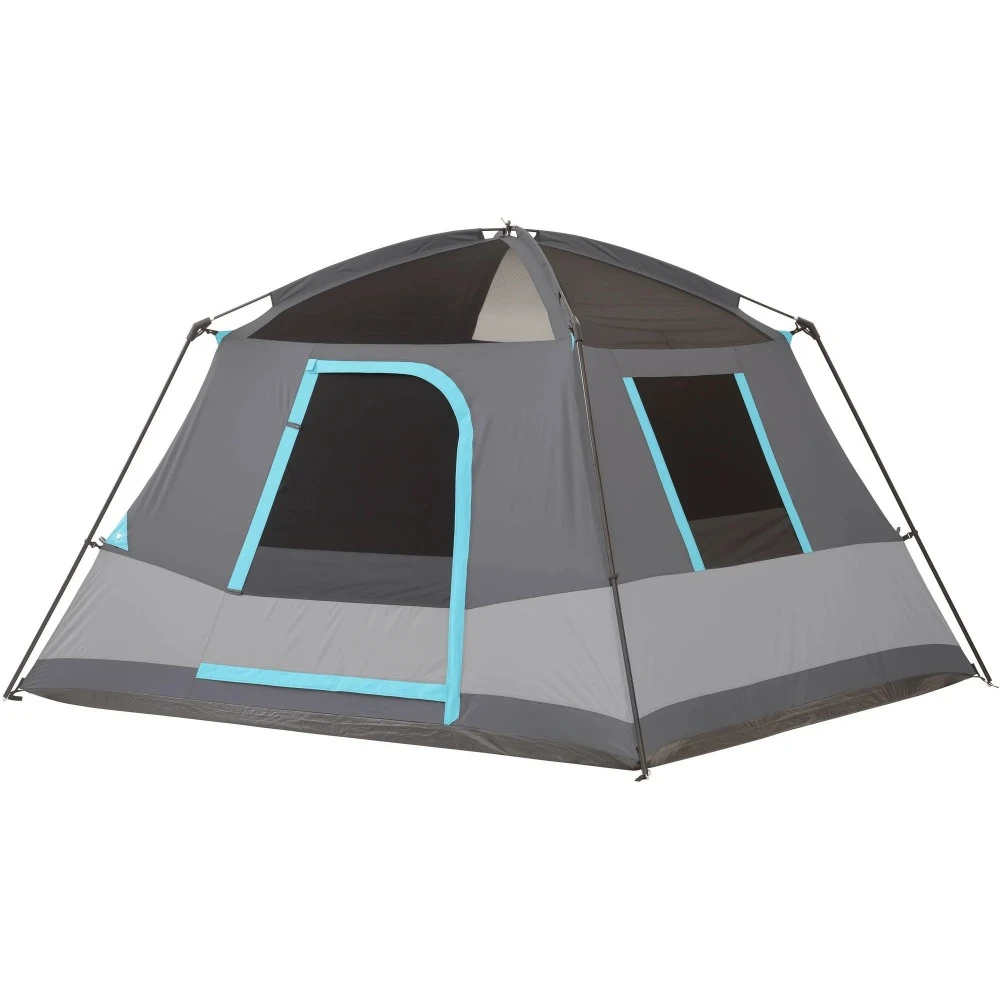
Backpacking Tents with Generous Vestibules: Lightweight Space Efficiency
The remarkable innovation in modern backpacking tent design has produced surprisingly functional vestibules without excessive weight penalties. These lightweight shelters demonstrate clever engineering that maximizes protected space while maintaining manageable trail weight.
Modern backpacking tents approach vestibule design primarily through two configurations:
1. Single large vestibule (typically 6-7 square feet/0.56-0.65 square meters)
2. Dual vestibules (typically 4-5 square feet/0.37-0.46 square meters each)
The dual vestibule configuration has gained particular popularity for two-person backpacking tents, as it provides each occupant with their own protected entry and storage area. This arrangement eliminates the need to climb over a partner or their gear when entering or exiting the tent—a significant comfort advantage on extended trips.
Pros:
– Impressive space-to-weight ratios with minimal penalties
– Dual vestibules eliminate cross-tent traffic
– Smaller footprint requirements fit more restricted camping areas
– Faster setup time compared to larger structures
Cons:
– Limited headroom restricts vestibule functionality
– Smaller overall dimensions require more efficient packing
– Lightweight materials may require more careful handling
– Weather protection sometimes compromised for weight savings
Understanding the tent vestibules backpacking camping relationship reveals how critical these spaces become when carrying all supplies in a pack. For the weight-conscious backpacker, the addition of 4-7 square feet of protected space per vestibule represents an exceptional value proposition, creating functional outdoor living with minimal carrying penalties.
The latest ultralight designs achieve these generous vestibules through asymmetrical geometries, specialized lightweight poles, and advanced materials that maintain strength while reducing weight. For backpackers who spend extended time on the trail, the space efficiency of these designs transforms the camping experience without overtaxing the carrier.
Critical Vestibule Features: Beyond Simple Square Footage
While dimensions matter significantly in vestibule functionality, several critical design features dramatically impact the usability of these spaces regardless of their size:
Floor Options: The choice between floored and floorless vestibules presents distinct advantages in different scenarios. Floorless designs allow cooking with appropriate stoves (with careful ventilation), easier cleaning of muddy gear, and weight savings in backpacking contexts. Floored vestibules provide cleaner storage areas, better bug protection, and more comfortable sitting space but add weight and cost.
Access Points: Multiple doors and thoughtful entry configurations significantly enhance vestibule functionality. Side-entry designs often provide better weather protection than front-entry configurations, while dual doors eliminate disruptive cross-tent traffic. Premium designs incorporate D-shaped or oval doors that allow easier entry/exit while minimizing open area during bad weather.
Ventilation Systems: Proper airflow prevents condensation—the nemesis of comfortable vestibule use. Effective designs incorporate high/low ventilation principles with roof vents, adjustable door configurations, and strategic mesh panels. These systems create air movement that reduces moisture buildup, particularly crucial when storing wet gear or using the space during rainy conditions.
Usable Volume: The true measure of vestibule functionality often comes down to usable volume rather than floor dimensions. Steeply sloped walls dramatically reduce usability despite adequate floor space. Superior designs maintain height throughout the vestibule area with support structures that maximize vertical clearance, allowing storage of taller items and more comfortable movement.
Integrated Organization: Mastering tent vestibule organization becomes simpler with built-in solutions. Premium vestibule designs now include hanging systems, integrated pockets, gear lofts, and equipment hooks that transform empty space into functional storage systems. These features prevent gear from spreading across the ground, keeping items accessible and protected from ground moisture.
Adaptability: The ability to reconfigure vestibule space enhances its functionality across weather conditions. Advanced designs include doors and panels that convert to awnings, adjustable ventilation systems that adapt to changing conditions, and modular components that can be added or removed as needed. This adaptability extends the usability of vestibule space across diverse environments.
These features, when thoughtfully implemented, transform basic covered space into highly functional extensions of living area. The difference between adequate and exceptional vestibule design often lies in these details rather than simple dimensional measurements.
Finding Your Perfect Expanded Vestibule Tent: A Buyer’s Guide
Selecting the ideal tent with expanded vestibule space requires balancing numerous variables against your specific camping needs. Follow these steps to identify the perfect shelter for your outdoor adventures:
- Assess Your Camping Profile:
Begin by honestly evaluating how you camp most frequently. Consider:
– Typical group size and composition (solo, couples, families with children)
– Average trip duration (weekend outings vs. extended expeditions)
– Transportation method (backpacking, car camping, base camping)
– Seasonal usage patterns (3-season vs. 4-season requirements)
– Primary environments (forests, mountains, desert, coastal)
These factors establish your baseline requirements and eliminate unsuitable options early in the process.
Determine Vestibule Requirements:
Based on your camping profile, determine specific vestibule needs:
– Minimum square footage (4-6 ft² for solo backpacking, 8-12 ft² for couples, 15+ ft² for families)
– Single large vestibule vs. dual smaller vestibules
– Floored vs. floorless designs
– Required headroom for planned activities
– Must-have features (cooking capability, pet accommodation, gear organization)Evaluate Overall Tent Quality:
Vestibule functionality depends significantly on overall tent construction quality:
– Fabric specifications (75-200D polyester/nylon for durability with reasonable weight)
– Waterproofing ratings (minimum 1500mm hydrostatic head for rainfly)
– Pole materials (aluminum for better strength-to-weight ratio than fiberglass)
– Seam construction (taped seams and reinforced stress points)
– Ventilation systems (especially important for preventing condensation)Balance Features with Budget:
Expanded vestibule tents span a wide price range, with clear correlations between cost and features:
– Entry-level ($100-200): Basic expanded vestibules, typically heavier materials
– Mid-range ($200-350): Better space-to-weight ratios, improved materials
– Premium ($350-500+): Maximum space efficiency, superior materials, advanced features
When researching specific models, careful attention to the best tents gear storage vestibules reviews can reveal how theoretical specifications translate to real-world functionality. Remember that expanded vestibule value depends entirely on how well it meets your specific needs rather than any universal standard.
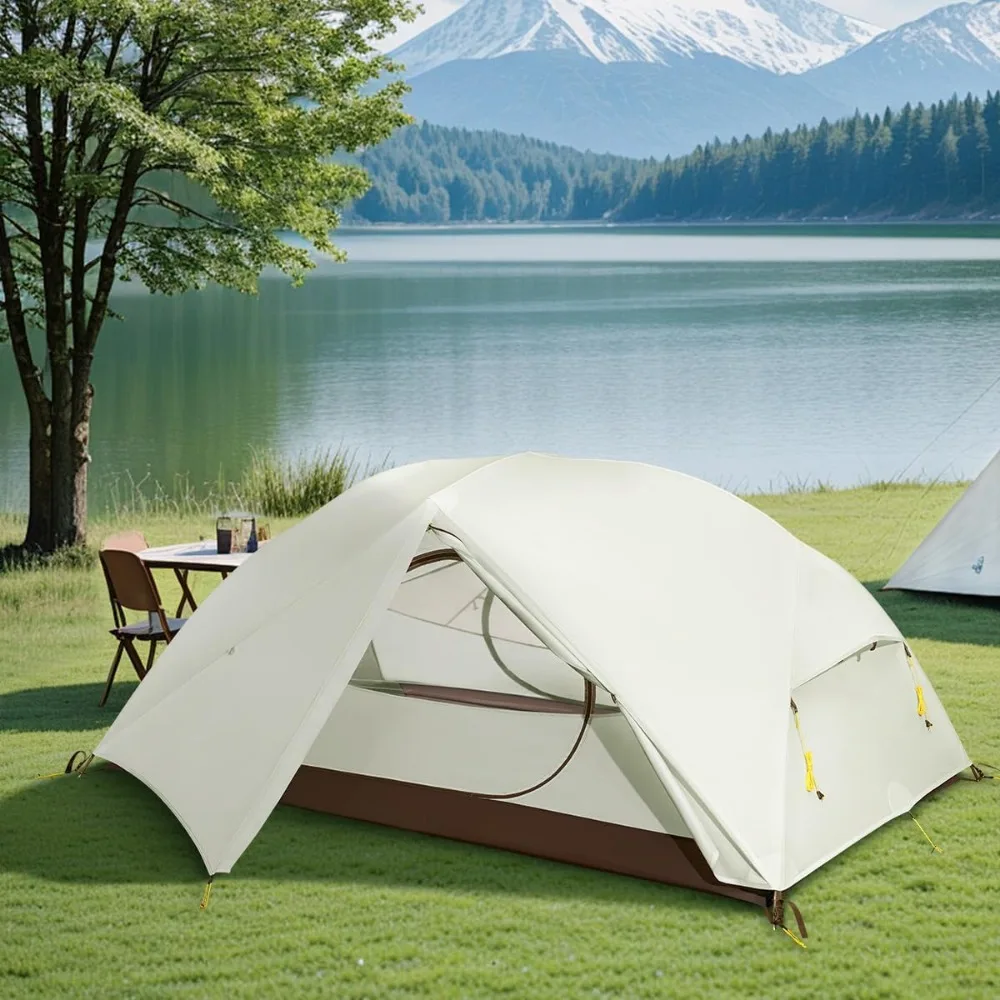
Maximizing Your Vestibule Space: Practical Usage Tips
Once you’ve selected the ideal tent with expanded vestibule space, implementing these practical usage strategies will maximize its functionality:
Efficient Gear Organization: Create vertical storage systems that utilize the full volume of your vestibule rather than just floor space. Lightweight accessory cord can create hanging systems for wet clothing, while stackable waterproof containers maximize storage efficiency. Always position frequently accessed items near the door and reserve back corners for equipment needed less often.
Safe Cooking Considerations: While cooking in vestibules can be convenient during poor weather, it requires careful attention to safety. Always ensure excellent ventilation by maximizing door openings and vents, maintain safe distances between flame sources and tent materials (minimum 12 inches), and never leave stoves unattended. Carbon monoxide risks make adequate ventilation non-negotiable.
Comfortable Lounging: Transform your vestibule into usable living space by bringing compact seating options like inflatable cushions or lightweight camp chairs. In larger vestibules, weatherproof floor mats create clean, comfortable surfaces that extend usable space beyond the sleeping area—particularly valuable during extended weather events.
Privacy Solutions: Vestibules make excellent changing areas with simple privacy adaptations. Lightweight clotheslines with mini carabiners can hold bandanas or small towels as temporary privacy screens, while strategic positioning of backpacks can create visual barriers when changing in group camping situations.
Weather Adaptations: Adjust your vestibule configuration based on current conditions. During rain, position the door opening downhill and keep it minimally open to prevent water entry. In hot conditions, maximize opening configurations for airflow, while windy conditions may require repositioning the tent or adding extra guylines to vestibule corners for stability.
These practical approaches transform living space ultimate game changer capabilities by adapting the static vestibule design to specific situational needs. The most successful vestibule users view these spaces as dynamic environments rather than simply storage areas, adjusting configurations as conditions and requirements change.
Tall / Stand Up Camping Tent, Two Room Camping Tent
$407.93 Select options This product has multiple variants. The options may be chosen on the product pageCamping Tent with Vestibule, Waterproof Camping Tent
Price range: $407.89 through $479.48 Select options This product has multiple variants. The options may be chosen on the product pageBackpacking Tent with Vestibule, Freestanding Backpacking Tent, Lightweight Backpacking Tent
Price range: $446.89 through $447.22 Select options This product has multiple variants. The options may be chosen on the product page- $476.52 Select options This product has multiple variants. The options may be chosen on the product page
Backpacking Tent with Vestibule, Trekking Pole Backpacking Tent, Waterproof Camping Tent
Price range: $271.99 through $519.52 Select options This product has multiple variants. The options may be chosen on the product pageBackpacking Tent with Vestibule, Heavy Duty 4 Season Tent, Trekking Pole Backpacking Tent, Winter Camping Tent
Price range: $257.52 through $537.51 Select options This product has multiple variants. The options may be chosen on the product page
Important Considerations Before Choosing an Expanded Vestibule
While expanded vestibules offer tremendous advantages, they come with several important considerations that might influence your purchasing decision:
Increased Footprint Requirements: Tents with expanded vestibules require significantly more ground space than their interior dimensions suggest. This expanded footprint (often 30-50% larger than the sleeping area) can limit suitable campsites, particularly in designated camping areas with defined tent pads. Before purchasing, compare the total footprint dimensions to typical camping locations you frequent.
Weight and Packed Size: Expanded vestibule designs inevitably add weight and bulk. The relationship between tent materials pack weight balance becomes crucial when considering portable shelters. Expect weight increases of approximately 15-25% compared to similar tents with standard vestibules. For car camping, this presents minimal concern, but backpackers should carefully evaluate if the additional protected space justifies the carrying penalty.
Setup Complexity: More complex vestibule designs generally require more time and effort to pitch correctly. Larger vestibules often need careful staking and proper tensioning to function as designed. In challenging conditions like high winds or heavy rain, this additional complexity can become problematic, especially for less experienced campers or when setting up in darkness.
Budget Considerations: Expanded vestibules add cost through additional materials and more complex designs. Expect to pay a 15-30% premium for substantially enlarged vestibules compared to standard configurations with similar quality materials. This investment may be entirely justified by increased functionality but should be factored into purchasing decisions.
Wind Vulnerability: Larger vestibule areas create additional surface area that catches wind. This increased wind loading requires proper staking, guyline use, and sometimes strategic positioning relative to prevailing winds. Without proper setup, expanded vestibules can reduce overall tent stability in challenging conditions.
Maintaining Your Vestibule for Years of Adventure
Proper maintenance ensures your expanded vestibule continues providing reliable service throughout numerous adventures:
Cleaning Protocols: Vestibules typically accumulate more dirt than main tent areas due to their transition-zone function. Regular cleaning with a soft brush removes surface debris, while periodic deep cleaning with mild soap and water (never detergent) addresses stubborn grime. Pay special attention to door zippers and floor areas that accumulate the most dirt.
Drying Techniques: Always completely dry vestibule materials before storage, even if the main tent body appears dry. The larger surface area and potential ground contact make vestibules particularly susceptible to mildew. After wet trips, set up the tent with maximum ventilation or hang the rainfly separately until thoroughly dry—typically 2-4 hours in good conditions.
Storage Practices: Store loosely in breathable bags rather than tightly compressed in stuff sacks during long-term storage. This practice preserves waterproof coatings and reduces material stress, particularly important for the larger fabric panels used in expanded vestibules. Climate-controlled storage significantly extends material life.
Regular Inspection: Check seam sealing annually and repair as needed. Examine stress points around vestibule poles and guyline attachments, which often show wear first. Address small issues immediately before they compromise waterproofing or structural integrity.
Common Repairs: Keep silicone-based seam sealer, tenacious tape, and spare guylines in your repair kit. Vestibule floors typically require repairs most frequently due to abrasion, while door zippers benefit from periodic cleaning and lubricant application to prevent failure.
These maintenance practices significantly extend vestibule life, transforming what could be a short-term investment into long-term reliable performance across many seasons of adventure.
Is an Expanded Vestibule Right for Your Camping Style?
After exploring the various designs, benefits, and considerations of expanded vestibules, the ultimate question remains: does your camping style truly benefit from this feature? Consider these reflective questions:
Do you frequently camp in wet or variable weather conditions where protected transition space becomes essential? If your typical camping involves consistent fair weather, the advantages of expanded vestibules may be less significant compared to other features.
Does your camping gear collection include bulky items that benefit from protected storage outside the sleeping area? Photographers, families with children’s equipment, or those with activity-specific gear often gain the most from expanded vestibule space.
Are you willing to accept trade-offs in weight, setup complexity, or cost to gain additional protected space? The benefits of expanded vestibules come with corresponding compromises that may or may not align with your priorities.
Do your typical campsites provide adequate space for larger footprint shelters? Restricted camping areas or dense forest settings might limit practical usage of expanded designs regardless of their theoretical benefits.
For many outdoor enthusiasts, the answer emerges naturally from these considerations. Weekend warriors focusing on good-weather camping might find standard vestibules entirely adequate, while those spending extended time in variable conditions often consider expanded vestibules essential rather than optional.
The true value of expanded vestibule designs ultimately lies in how well they address your specific camping challenges and enhance your outdoor experience. By carefully evaluating your needs against the options available from premium outdoor companies like Explore Elements, you’ll identify the optimal balance between protected space, weight, and functionality for your unique adventure profile.

